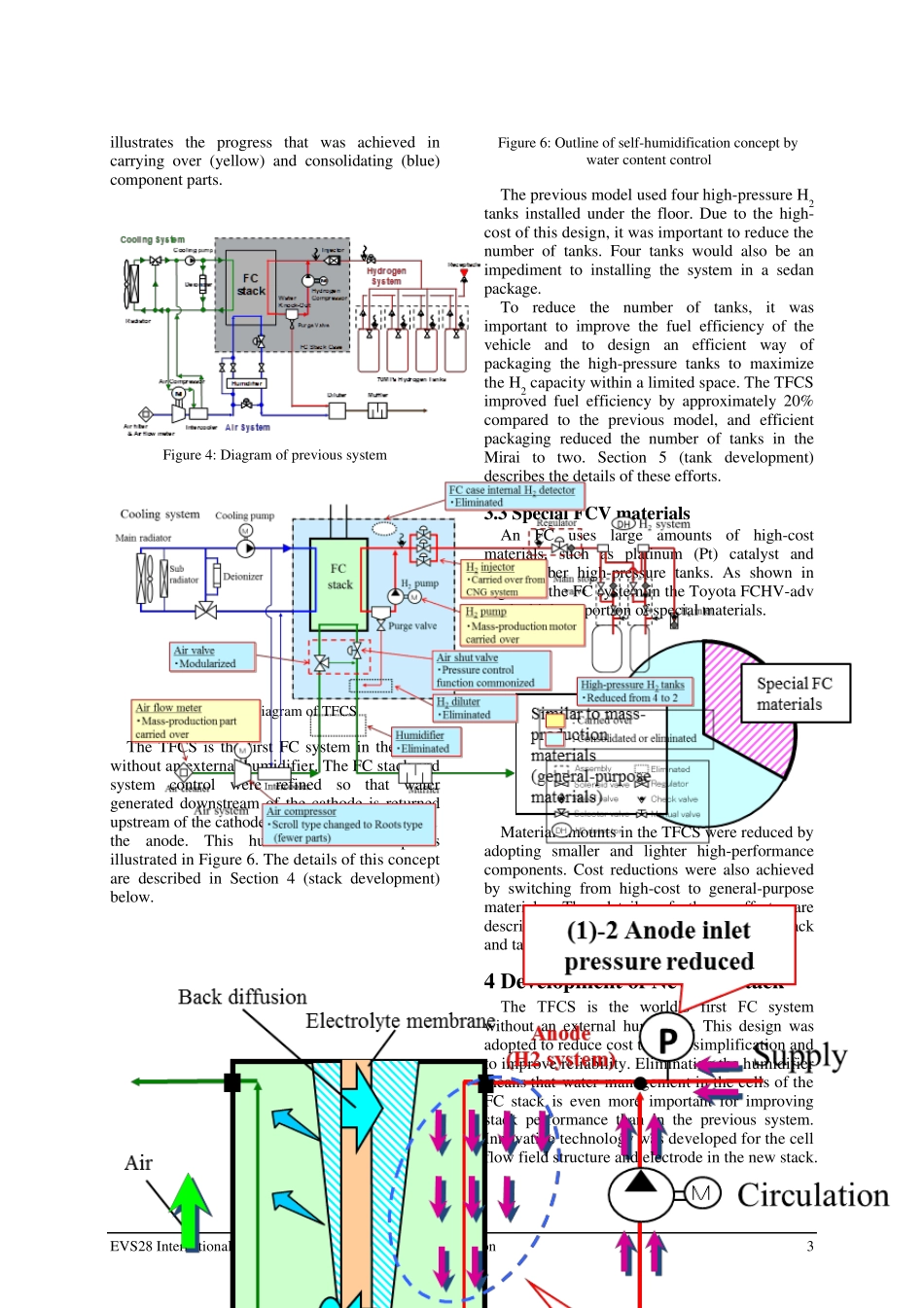EVS28 International Electric Vehicle Symposium and Exhibition 1 EVS28 KINTEX, Korea, May 3-6, 2015 Toyota Fuel Cell System (TFCS) Hiroyuki Yumiya Fuel Cell System Engineering Divion, TOYOTA MOTOR CORPORATION 1 Toyota-cho, Toyota, Aichi, Japan 471-8571 hiroyuki_yumiya@mail.toyota.co.jp Mikio Kizaki mikio_kizaki@mail.toyota.co.jp Hisao Asai hisao_asai@mail.toyota.co.jp Abstract In December, 2014, Toyota Motor Corporation started public sale of FCV "MIRAI" ahead of the world. Toyota Fuel Cell System (TFCS) was aimed to realize the world’s first truly practical FCV, which would be capable of demonstrating the potential of FCVs. TFCS was adopted in MIRAI, enhanced the excellence of FCV, which had the reputation remarkably so far and Toyota drastically reduced the cost of the FC system, which is one of the largest obstacles to the commercialization of FCVs. This paper describes the development of the TFCS and its components, focusing on the approaches taken to accomplish this reduction in cost. Keywords: EV・HV system, Fuel Cell, Hydrogen Tank, System Technology 1 Introduction The use of electricity and hydrogen (H2) is regarded as a promising way of helping to resolve environmental and energy related issues. For this reason, H2-powered fuel cell vehicles (FCVs) are attracting attention as a type of alternative energy vehicle with strong market appeal. In addition to clean and highly efficient environmental performance, FCVs also combine driving enjoyment and user-friendliness through smooth and quiet dynamic performance using motors and a similar cruising range and refuelling time as conventional gasoline vehicles. Toyota Motor Corporation began the development of FC systems in 1992 and was the first automaker in the ...


